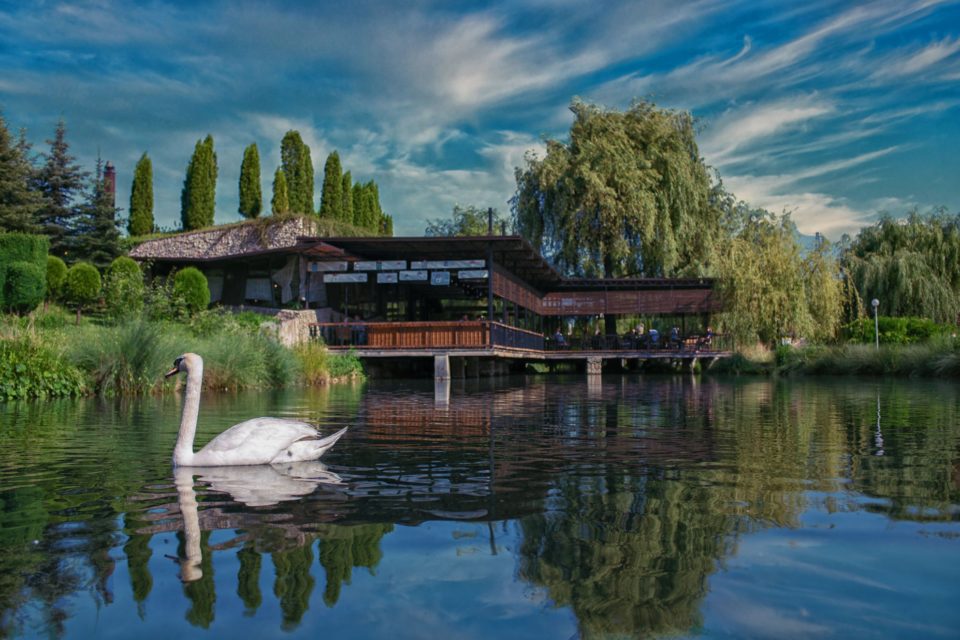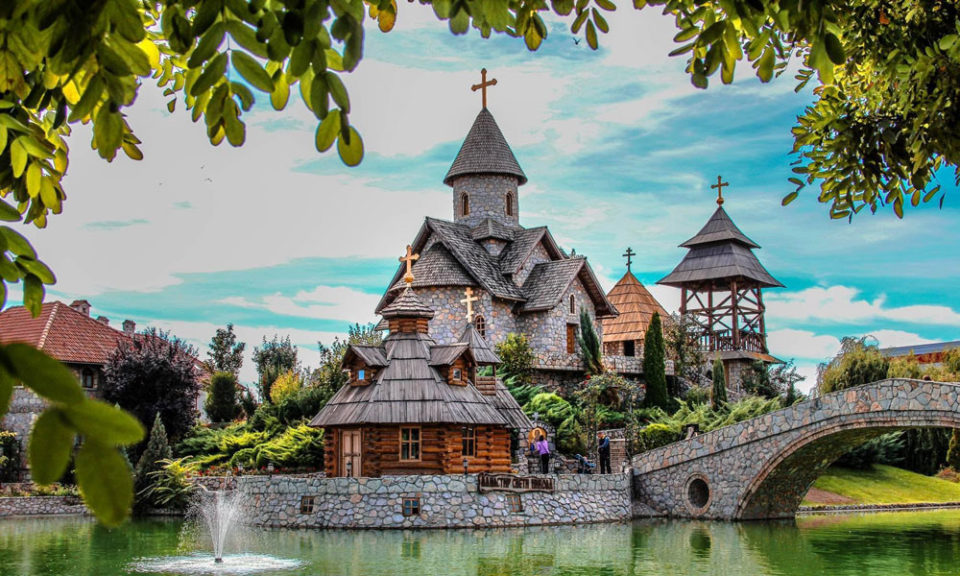
Ethno villages are guardians of national traditions built in the likeness of former Bosnian-Herzegovinian villages. They take you back to Bosnia a hundred years ago and present various historical aspects of life during that time, as well as untouched natural beauty. These villages are often complemented by modern amenities. They strengthen the local economy and serve as eco and ethno-tourism potentials. There are more than 25 of these villages in Bosnia and Herzegovina, each unique in its own way, but they all share a rich gastronomic offering. Visiting them gives the impression that time has stood still.
They usually arise from various entrepreneurial initiatives, with or without support from local authorities or tourism associations. In their effort to preserve traditional culture, individuals or families take on the challenge of renovating old houses, barns, and other structures, to mimic traditional villages of Bosnia and Herzegovina (BiH). This transformation, once completed, leads to the establishment of BiH’s ethno villages.
They are located in different parts of Bosnia and Herzegovina, sometimes on mountain slopes, and other times just a few kilometers from city centers. They are often surrounded by forests, meadows, streams, or even their own private hydroelectric power plants. To create a homely atmosphere, various types of fish, especially trout, are cared for in ethno villages, as well as other animals.
Alongside woven ethnographic textiles, handmade items, and religious structures, ethno villages attract the attention of both domestic and foreign visitors. To attract more guests, ethno villages enhance their offerings with modern amenities such as spas, swimming pools, and more.
To understand the unique cultural and economic opportunities these ethno villages offer, one must first understand how they bolster the local economy in an era of fickle globalization.
Strengthening the Local Economy and Tourism
Citizens of Bosnia and Herzegovina often find their oasis of peace in ethno villages, both during the summer and winter seasons. Additionally, an increasing number of business meetings, strategic planning sessions, and even concerts and performances are being held in these villages. Sometimes, wedding celebrations are also hosted there.
Supporting eco and ethno tourism is a way to strengthen the local economy and enhance the overall tourism potential of Bosnia and Herzegovina.
Ethno villages make a significant contribution to the local economy by creating opportunities for employment and entrepreneurship. The local population have opportunities to work as guides, cooks, artists, artisans, and more. Meanwhile, visitors often purchase vegetables, meat, and other essentials from local farmers for preparing traditional dishes. Some villages sell handcrafted items and products made by local residents, which is another way to promote local producers and regional specialties.
Ethno villages also play an important role as tourist attractions. Visitors from around the world are drawn to the chance to experience traditional ways of life and culture. In addition to providing insights into the history and cultural heritage of a particular area, ethno villages offer a range of activities for tourists, including workshops where visitors can engage in traditional crafts, participate in cultural events, and sample typical regional dishes and drinks. These interactive experiences allow visitors to connect more closely with the tradition and history of the area.
To illustrate some of the values of eco and ethno tourism in BiH, one may look at three of the country’s ethno villages: Mačkovac, Stanišić, and Čardaci.
The Open-Air Museum of Mačkovac
Following the winding road from the municipality of Banovići (northeastern BiH), towards Mount Konjuh, you will arrive at the Ethno Village Mačkovac. After just five kilometers of driving through dense forest along the Oskova River, with occasional views of the Konjuh peak, you will find a true open-air museum.
The local museum houses over 30,000 exhibits. In addition to an impressive collection of old items – including work tools, cookware, traditional costumes, and folklore – it features a traditional Bosnian craft for making coffee pots, džezve (Turkish coffee pots), flutes, and wooden spoons. Visitors can also see Bosnian rifles from various historical periods. There is also a collection of clocks, which demonstrate technological development over the centuries as well as the aesthetics of antique pocket watches. Among the embroidery, tapestries, and other artifacts, there are over 1,600 old books, documents, and records, forming a collection more than 200 years old. Each item tells a story that takes us back to a distant, unfamiliar time, which appears to live on in the ethno village.

The courtyard features the Bey’s House, which has preserved its authenticity since 1966, with interesting cultural artifacts such as a divan decorated with fabrics. Within the Bey’s House, there is also a cinema. There are also various historical items on display, including a sehara (chest), sećije (traditional low sofas) adorned with fabrics, a mangala (charcoal heater), ibriks (water pitchers), and more.
The old Bosnian way of life and traditions still endure, surrounded by centuries-old trees, water streams, and the breath of nature, waiting for new generations to experience them in their own way and pass them on to posterity.
If you wish to take a piece of this time capsule with you, there is a wide range of souvenirs available, including pipes, muštikle (traditional pipe tobacco), various cookware, typical musical instruments, and keychains.
Ethno Village Čardaci
In the heart of Bosnia and Herzegovina, in a unique setting on the banks of the Lašva River, near the Zenica–Travnik road, lies the ethno village Čardaci, part of a large ecological, tourist, and entertainment complex within the Čardaci Tourist Resort.
One of Čardaci’s advantages is its excellent road connections to Zenica, Travnik, and Sarajevo, while also offering peace and seclusion.

In Čardaci, you can find the Ribica Water Park, the pub Kod crnog mačka (At the Black Cat’s), the restaurant Kod mlina (At the Mill), the fishpond Izmišljeni potok (Imaginary Stream), a hydroelectric power plant, a wind power plant, solar panels, three small man-made lakes, and springs, all located along the Lašva River.
This ethno village is home to the first solely private hydroelectric power plant in the Balkans, which began operations in 2006. Alongside the plant, it is important to note the presence of the village’s wind turbine and solar panels. This diverse infrastructure reflects a holistic approach and strong commitment to environmentally sustainable initiatives. The ethno village consists of 60 accommodation units (150 beds), built from natural materials, inspired by and featuring details of traditional Bosnian houses, generally dating back to the Austro-Hungarian and Ottoman periods, offering guests the experience of a homely atmosphere. The Charter of Ban Kulin (12th century), the oldest preserved document attesting to centuries of Bosnian statehood and one of the oldest state documents among all Yugoslav peoples, has also found its place in the Čardaci ethno village. The charter is depicted and inscribed on the walls of the village restaurant.
While viewing the Charter of Ban Kulin, you can also sample the village’s gastronomic offerings, which have been expanded with the construction of a fishpond dedicated to raising brook and rainbow trout.
Replica of Orthodox Structures in Stanišić
Three kilometers from Bijeljina, towards Pavlović Bridge, lies the ethno village of Stanišić. Stepping out of the present time and space, it takes Bosnians back to their ancestors and nature, evoking admiration for the simplicity of bygone days. The village is divided into two main sections. One consists of wooden houses—log cabins—with traditional furniture and folk costumes, as well as a water mill, dairy, blacksmith’s forge, stone well, and granary. The other section has a spiritual character, featuring impressive architecture built from stone, representing a collection of religious replicas.
In the ethno village, you can find a replica of the Ottoman-era bridge Kozja Ćuprija from Sarajevo, dating back to the Ottoman period. The original bridge had reached across Sarajevo’s Miljacka River.

There’s also a Baptistry modeled after a small church found in Alaska. The ethno village features the Stanišić Monastery dedicated to Saint Nicholas. This monastery is a replica of the Kumanica Monastery in Serbia, where fragments of the relics of Emperor Uroš and Saint Nicholas are said to be laid to rest. Adjacent to the Stanišić Monastery is a monastery house (konak), replicating medieval architecture.
Both the ethno village of Stanišić and the ethno village of Čardaci feature stone amphitheaters, which occasionally host cultural events under the open sky. At the center of the stone amphitheater in the ethno village of Čardaci is a plaque with the inscription “Mirna Bosna” (Peaceful Bosnia).
The ethno villages of Mačkovac, Čardaci and Stanišić are just three examples of the many ethno villages in Bosnia and Herzegovina. These ethno villages enchant visitors with their attractions, offerings, and preservation of heritage.






